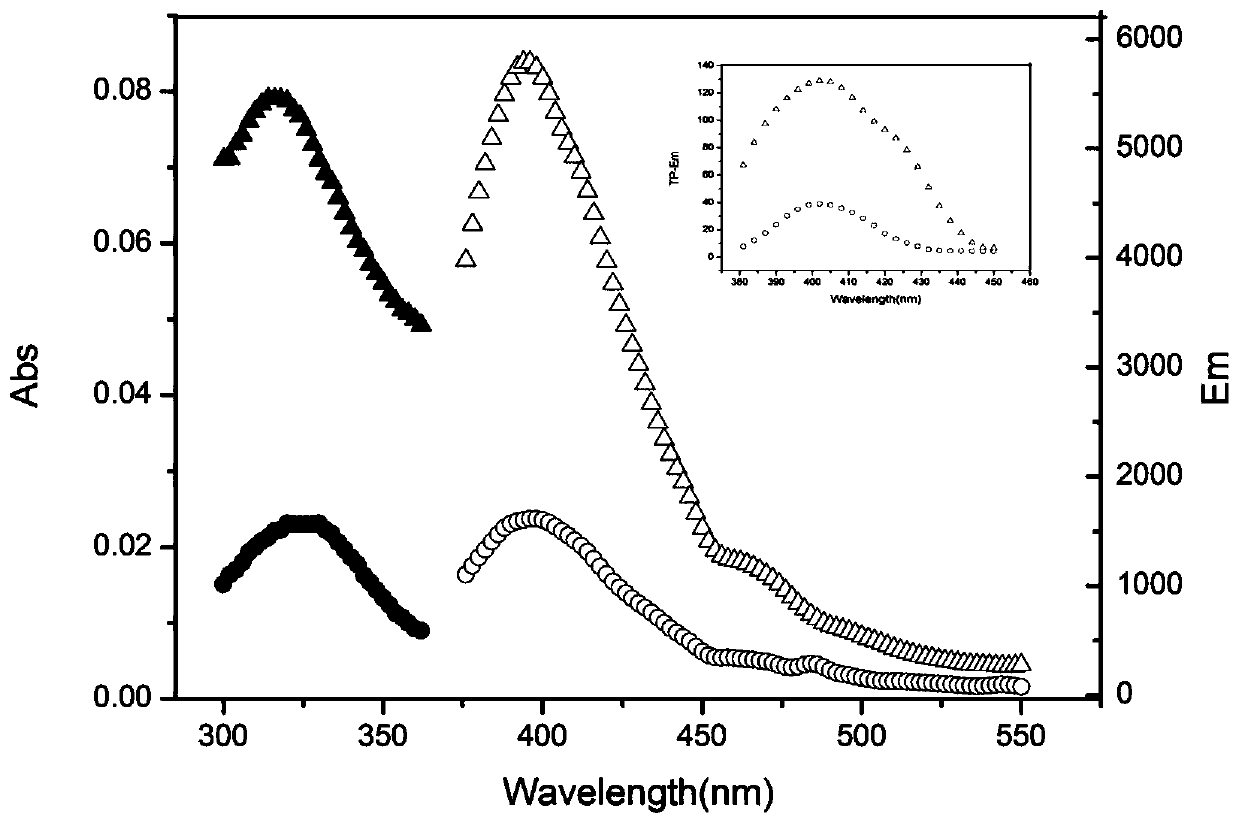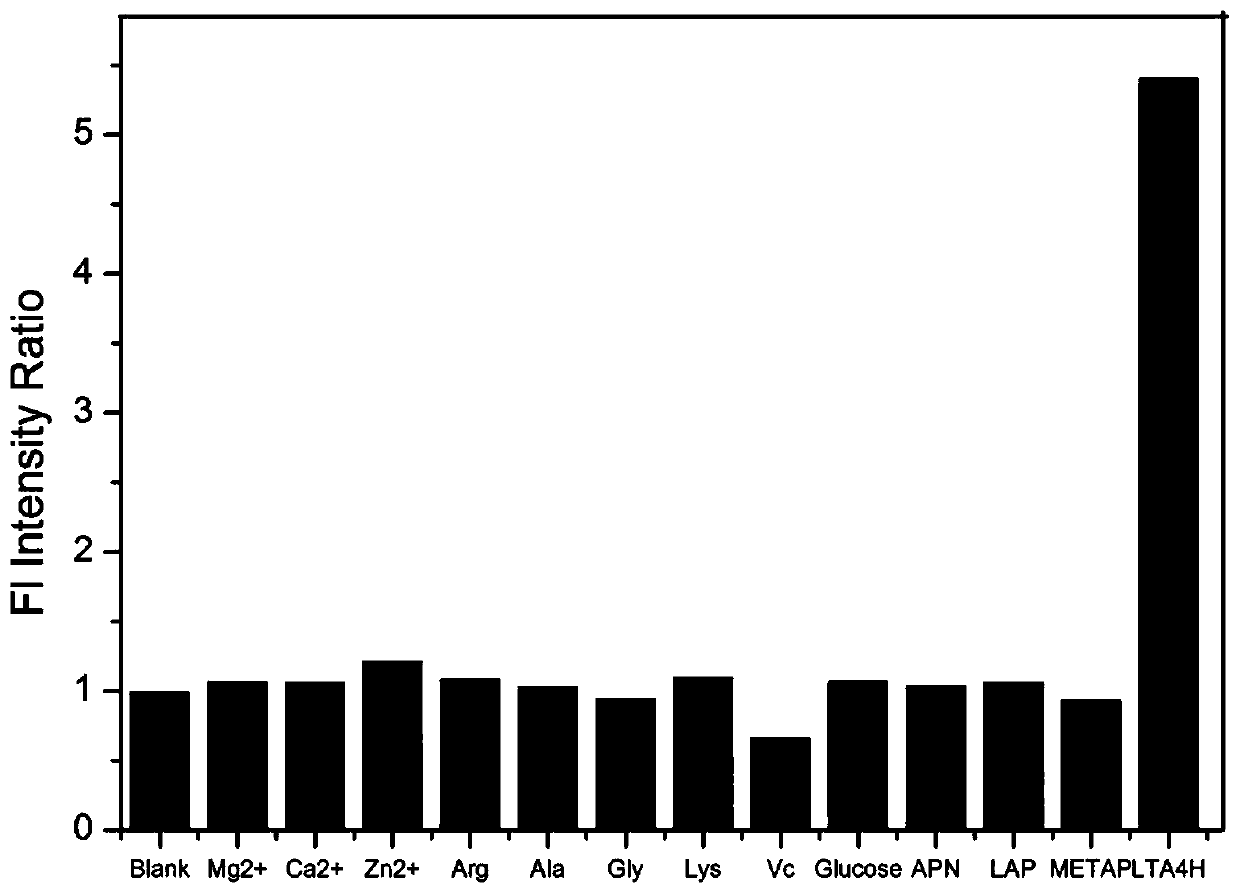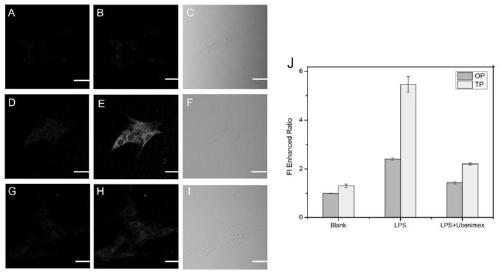Two-photon fluorescent probe for detecting activity of pneumonia marker and synthesis method
A two-photon fluorescence and probe technology, used in fluorescence/phosphorescence, chemical instruments and methods, luminescent materials, etc., can solve the problems of lack of probes and few probes, and achieve low cytotoxicity and high yield. , the effect of easy purification
- Summary
- Abstract
- Description
- Claims
- Application Information
AI Technical Summary
Problems solved by technology
Method used
Image
Examples
Embodiment
[0052] Example: Synthesis of Fluorescent Probes
[0053] Dissolve raw material a in 5 mL of dichloromethane, then add 2 mL of thionyl chloride, and react at room temperature for 2 h. After the reaction was complete, the solvent was removed by rotary evaporation. Then petroleum ether: dichloromethane = 5:1, recrystallized to precipitate a beige solid, that is, compound b (82%).
[0054] Take compound b and compound c (the molar ratio of compound b and compound c is 1:1), dissolve in 10 mL of acetic acid, and heat at reflux at 90° C. for 5 h. After the reaction was complete, the solvent was removed by rotary evaporation. Redissolved in dichloromethane and separated through a silica gel column (eluent: ethyl acetate) to obtain an off-white solid, ie ASPC (42%).
[0055] NMR and mass spectrometry characterization:
[0056] 1 HNMR(400MHz,DMSO)2.41(s,3H),2.59-2.63(m,2H),2.65-2.80(m,2H),3.76-3.79(m,1H),5.11(s,2H),6.28(s ,1H),7.30-7.35(m,5H),7.55(d,J=12HZ,1H),7.71(d,J=12HZ, 1H),...
PUM
 Login to View More
Login to View More Abstract
Description
Claims
Application Information
 Login to View More
Login to View More - R&D
- Intellectual Property
- Life Sciences
- Materials
- Tech Scout
- Unparalleled Data Quality
- Higher Quality Content
- 60% Fewer Hallucinations
Browse by: Latest US Patents, China's latest patents, Technical Efficacy Thesaurus, Application Domain, Technology Topic, Popular Technical Reports.
© 2025 PatSnap. All rights reserved.Legal|Privacy policy|Modern Slavery Act Transparency Statement|Sitemap|About US| Contact US: help@patsnap.com



